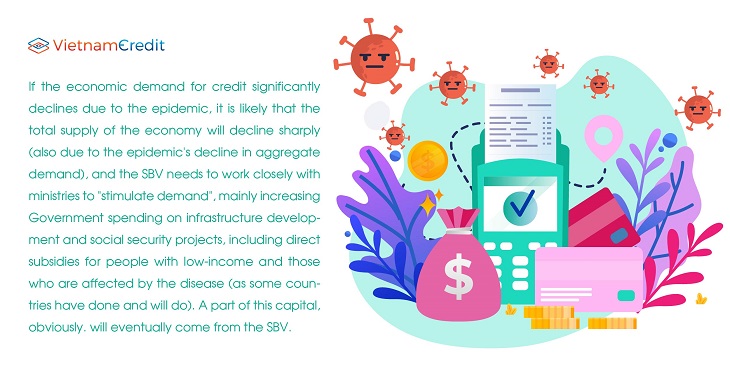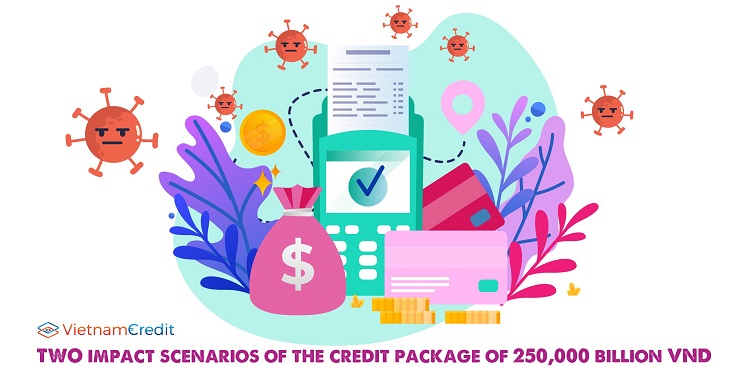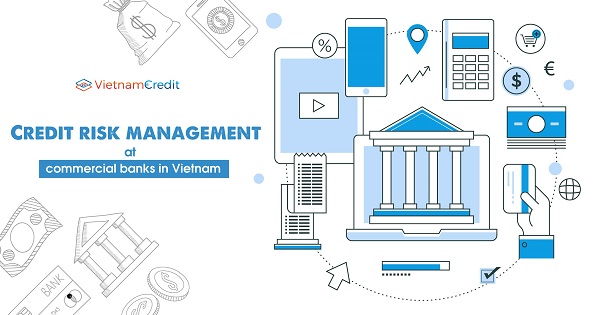This directive mentions a credit support package of 250,000 billion VND to support businesses and people affected by the disease.
The Government has just issued Directive 11 on urgent solutions to remove difficulties for production and business, ensuring social security in the context of coping with Covid-19. This directive mentions a credit support package of 250,000 billion VND to support businesses and people affected by the disease.
In general, according to experts and officials, this credit package will not have a (significant) impact on inflation and macroeconomic stability. This view is based on the grounds that the funding for this credit package is not from the state budget, but from the commercial banks themselves;
They are responsible for lending, recovering debts according to the commercial terms, and the State does not compensate losses. It is worth noting that although there is agreement on the "safety" of this credit package, there is inconsistency in the interpretation of the methods of disbursements.
Specifically, some people believe that this credit package is not new money injected into the economy in the form of new loans or new credits, but only a summary of the current outstanding loans, in the form of debt restructuring, interest and fee reduction, etc.
On the contrary, others believe that this package will be used as new loans to support businesses and households affected by the disease (to support liquidity, working capital needs, etc.) However, both views agree that this new disbursed amount will (certainly) be included in the credit limit of commercial banks.
Because the State Bank of Vietnam (SBV) has not had specific instructions related to the said credit package, at this time, it is still not possible to confirm whether the credit package includes new loans. Depending on the direction of the State Bank, there will be a few different implications for the impact of the credit package on the macroeconomy.
Two impact scenarios
In the first scenario. the SBV only allows commercial banks to use this credit package to restructure, reduce interest rates and fees for existing credits, and the credit growth limit of commercial banks in particular and the banking industry, in general, do not change.
This scenario would imply that some of the new loans to businesses and households that are not prioritized for loans (including those affected by the disease) would be reduced, because a loan amount that is due to repaying to commercial banks from existing credits to those affected by the disease would be "suspended" on the bank's books, unable to return to commercial banks to be re-lent.
The losses from reducing interest rates and fees also would contribute to reducing the capital available for lending to other subjects. The next supposition is that the aggregate demand for credit of the economy does not change compared to before the epidemic occurred (and this is reflected in the keeping of the SBV's credit growth target for the whole banking sector).
At that time, commercial banks would be forced to raise deposit rates to have more capital to lend to those subjects, which means that commercial banks would have to raise interest rates to these subjects to offset the decline in credit profit as well as lending capital.
In other words, when commercial banks have to restructure debts, reduce interest rates and fees, while the State Bank does not increase the money supply, interest rates will be under increasing pressure, reducing the motivation for economic growth in the short term.
In response to this first scenario, the SBV needs to closely monitor the actual credit demand of the economy in order to react promptly when needed (when the demand for loans of businesses and people is still increasing strongly, despite the disease).
In the second scenario, the SBV would allow commercial banks to use this subsidy credit package as new loans for those businesses affected by the disease. It is still assumed that the SBV would not change the money supply and credit growth targets. At that time, it could be said that this is the same scenario but it is at a higher level than the above scenario, in terms of the extent of affecting the interest rate level.
More specifically, besides suffering from the loss of capital and profit when a portion of the loaned capital is not recovered, commercial banks must also "struggle" to mobilize capital to continue new loans to not only those affected by the disease but also others.
It should be added that the (potential) bad debt in the second scenario would be even bigger than the first scenario when the bad debt arises not only in existing loans to disease-affected people but also from new loans to these same entities, with the unascertained ability to recover capital.
Because commercial banks have to raise deposit rates and under the pressure to increase bad debts, the second scenario would likely make the common interest rate level rise, affecting the prospect of economic growth more strongly in the short term (compared to the first scenario).
To deal with this scenario, the SBV must not only closely monitor the economy's aggregate demand for credit, but also strengthen the direction and inspection of new loans for those affected by the disease. If they find that these objects are not able to recover, the commercial banks must be allowed to let these subjects go bankrupt instead of "raising debt", which only increases the level of damage to the bank, and to the economy in the future.
Finally, if the economic demand for credit significantly declines due to the epidemic, it is likely that the total supply of the economy will decline sharply (also due to the epidemic's decline in aggregate demand), and the SBV needs to work closely with ministries to "stimulate demand", mainly increasing Government spending on infrastructure development and social security projects, including direct subsidies for people with low-income and those who are affected by the disease (as some countries have done and will do). A part of this capital, obviously. will eventually come from the SBV.

Need to be ready to deal with the prospect of "recovering" bad debt, and more.
Regardless of the scenario, the SBV and commercial banks still have to be ready to deal with the prospect of "recovering" bad debts and a sharp increase again during and after the epidemic. Inadequacies in the model, manner, and legal framework related to dealing with bad debts in the past should be urgently and promptly overcome thoroughly to minimize newly accumulated bad debts.
In addition, if this support credit package is implemented aggressively or, even increases in size, it will surely lead to a new situation as commercial banks turn to "ask" the SBV to "share" the damage from the restructuring, reduction of interest, fees, and new loans for those affected by the disease.
In response to this not-so-easily-denied requirement, especially when it is in response to the Government's policy of supporting the economy under the direction of the Government, the State Bank will have few options other than the solution to support the lending interest rate support, refinancing loans, direct loans to commercial banks participating in credit support packages with preferential interest rates, etc.
At this stage, it is technically possible to say that the policy of not loosening the monetary policy or not using the state budget will be difficult to maintain.
>> Which businesses are eligible for an extended tax payment due to Covid-19?
Source: https://www.thesaigontimes.vn/
























































